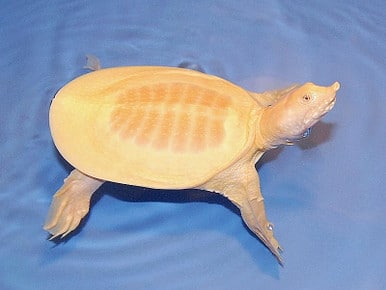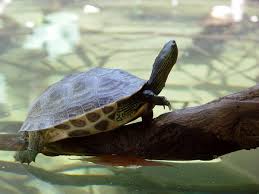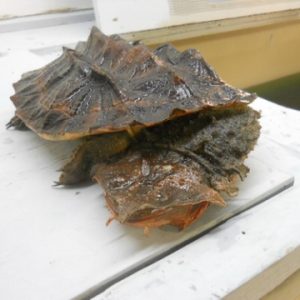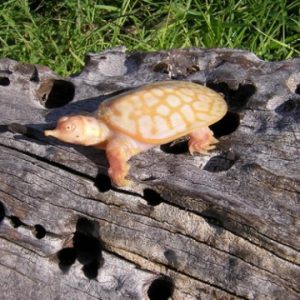Albino Chinese Softshell Turtle
Albino Chinese Softshell Turtle The Albino Chinese Softshell Turtle is a stunning and unique variation of the Chinese Softshell Turtle, prized for its striking pale coloration and translucent appearance. Known for its smooth, leathery shell and streamlined build, this turtle is a fascinating and active addition to any aquatic collection. Ideal for experienced keepers, the Albino Chinese Softshell T stands out as a rare gem in the reptile world.
Key Features:
- Scientific Name: Pelodiscus sinensis
- Size: Adults typically grow to 6-14 inches (15-35 cm) in shell length
- Appearance:
- Smooth, pale yellow to cream-colored shell with a soft, leathery texture
- Pinkish or reddish hues in the skin due to its albino nature
- Long, tubular snout and webbed feet, designed for efficient swimming
- Habitat: Found in freshwater environments like rivers, lakes, and ponds
Care Requirements:
- Enclosure: Spacious aquatic tank with clean, filtered water, a sandy substrate, and hiding spots
- Water Temperature: 75°F to 85°F (24°C to 29°C)
- Basking Area: Optional but can be provided with temperatures around 90°F (32°C)
- Diet: Carnivorous; enjoys fish, insects, crustaceans, and high-quality turtle pellets
- Behavior:
- Active and shy, often burrowing in the substrate
- Agile swimmer and primarily aquatic
Special Considerations:
- Visibility: Its bright coloring makes it highly visible, requiring a secure and predator-free environment
- Lifespan: Can live 20-30 years with proper care
- Rarity: Albino morphs are exceptionally rare and sought-after by collectors









